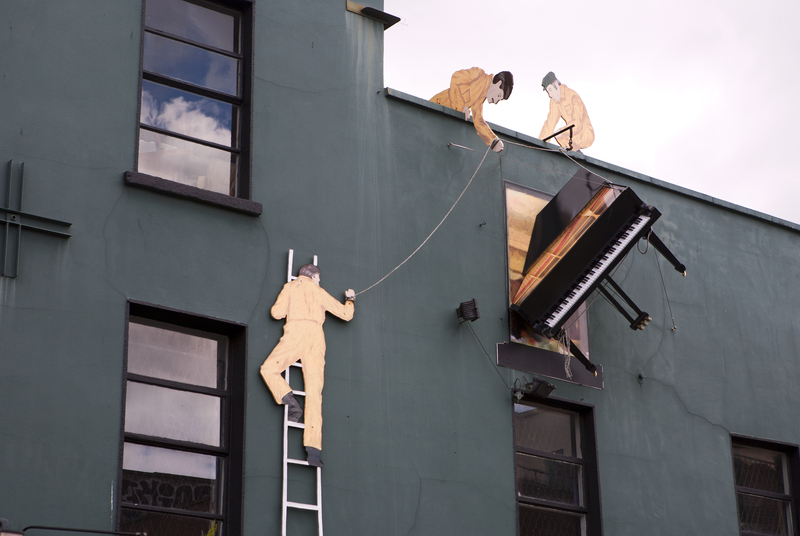Unlock Secrets to Hassle-Free Bed and Mattress Transport
Posted on 07/06/2025
Unlock Secrets to Hassle-Free Bed and Mattress Transport
Moving is challenging enough without the added stress of transporting large, bulky items like beds and mattresses. Whether you're moving across the city, heading off to college, or delivering a bed to a loved one, bed and mattress transport can present unique challenges. But fear not! In this comprehensive guide, we'll unlock the secrets to stress-free mattress transportation and ensure your valuable sleep investments arrive in pristine condition.
Why Hassle-Free Bed and Mattress Transport Matters
Both beds and mattresses are significant household investments. An improper move can damage your mattress, tear the fabric, bend its frame, or worse--render it unusable. Achieving a smooth, easy, and safe transport saves you money, protects your health, and ensures you sleep well the first night in your new home.
Common Challenges When Transporting Beds and Mattresses
- Bulky size and awkward shape: Large mattresses and bed frames don't fit easily through doors, hallways, or down stairs.
- Risk of damage: Dragging or improper stacking can cause tears, stains, or mechanical failures.
- Cleanliness concerns: Mattresses easily pick up dirt, dust, and moisture if not properly covered.
- Transport logistics: Many vehicles aren't equipped for large items, leading to makeshift solutions that jeopardize safety.
Ready to conquer these challenges? Keep reading to unlock professional secrets for seamless mattress and bed moving!

Prior Preparation: The Key Secret to Easy Bed and Mattress Moves
Preparation is everything. Before moving day, take these crucial steps to streamline your bed and mattress transport experience:
1. Gather the Right Supplies
- Mattress bags or covers: Use high-quality, waterproof covers to protect from dirt and moisture.
- Moving blankets: Protect wooden or metal bed frames from scratches and dings.
- Ratchet straps or rope: Secure items in your vehicle or truck to prevent sliding.
- Tool kit: Disassemble furniture safely with the correct tools.
- Gloves: Prevent hand injuries and improve grip during move.
- Label and zip bags: Store nuts, bolts, and hardware for reassembly.
Tip: Invest in quality supplies--mattress damage is often more costly than proper preparation.
2. Disassemble the Bed Frame
Disassembly makes transportation easier and safer. Remove the mattress and bedding first. Then, carefully take apart the bed frame and headboard. Place all screws and bolts in a labeled plastic bag. If your bed has slats or additional supports, bind them together with tape for easier management.
3. Measure Everything
Before attempting to move your mattress or bed, measure both the furniture and the pathways. Check stairwells, hallways, doors, and your vehicle's cargo space. This prevents last-minute headaches and damage to both your mattress and your home.
4. Protect the Mattress
Sliding a mattress directly onto floors, vehicle beds, or bare truck surfaces is a recipe for disaster. Always slip your mattress into a dedicated moving bag or wrap in thick plastic. Add moving blankets for extra protection--especially for memory foam or pillow-top models susceptible to tears and deformation.
The Best Ways to Transport Your Mattress and Bed
Now that you're prepared, it's time to choose the optimal method for bed and mattress transportation. Here are the best techniques based on distance, convenience, and safety:
1. Use a Moving Truck or Van
- If you're moving long distance or have a full bedroom set, a moving truck is ideal.
- Place the mattress vertically along the side of the truck, secured with straps to avoid shifting and bending.
- Lay flat only if there's ample space on top--never squeeze under heavy boxes or appliances.
- Bed frames, once disassembled, can be stacked or arranged flat.
- Use moving blankets between each item to prevent scratches and dents.
2. Moving a Bed and Mattress with Your Own Vehicle
- If you're moving a short distance, and your car is large enough, slide the mattress inside (back seats down, if possible).
- If using a roof rack, ensure the mattress is securely tied down using ratchet straps--never rope alone.
- Never drive at high speeds or in poor weather with a mattress on the roof--a dangerous move both for your mattress and other drivers.
- Small trucks, SUVs, or van rentals can often accommodate queen and full sizes comfortably.
3. Hire Professional Bed and Mattress Movers
- Professional moving companies specialize in safe, efficient transport of beds and mattresses.
- Most use custom mattress containers and have the expertise to maneuver tricky spaces.
- This is the hassle-free option--especially if you need to navigate stairs, elevators, or have fragile bed frames.
- Look for licensed and insured movers with experience handling delicate bedroom furniture.
Want peace of mind? Choose professionals for truly stress-free mattress and bed moves.
4. Shipping Beds and Mattresses Long-Distance
- For cross-country or international moves, specialty shipping companies provide bed and mattress delivery options.
- Makes sense if you're buying or selling beds online (such as via marketplaces).
- Proper packaging and protection is even more critical for long hauls to prevent moisture and impact damage.
Expert Tips: How to Move Different Types of Mattresses
Not all mattresses are created equal. Each type presents its own unique challenges and needs during a move. Here's how to keep them safe:
Memory Foam or Latex Mattresses
- Always keep flat during transport--these can bend or fold and may never recover their original shape if left that way too long!
- Avoid tying too tightly with straps; excessive force damages the foam layers.
- Use double-bagging for moisture protection; foam is particularly prone to absorbing water.
Innerspring Mattresses
- Can stand vertically but must be well-supported and secured to prevent bending of the inner coils.
- Avoid placing heavy items on top during transport.
Hybrid or Pillow-Top Mattresses
- These are heavy and prone to flex--double-check that they're supported and lay flat whenever possible.
- Use extra padding at corners and edges; these areas suffer most in transit.
Adjustable Bed Bases
- Disassemble per the manufacturer's instructions, removing electronics, cords, and batteries.
- Wrap the mechanisms in bubble wrap and secure inside sturdy boxes.
- Take photos of wiring and assembly to facilitate easy reinstallation at the new location.
How to Protect Your Mattress During Bedroom Moves
For truly hassle-free mattress moves, keep these pointers in mind:
- Never drag your mattress: Always lift with assistance to prevent fabric tearing and internal damage.
- Keep the mattress dry: A wet mattress is a ruined mattress. Use waterproof covers, especially in rainy or humid weather.
- Double-seal plastic covers: Once bagged, tape over seams for maximum protection if you expect dust or moisture.
- Handle with clean hands or gloves: Oil, dirt, and sweat can permanently stain mattresses.
- Unpack immediately: As soon as you arrive, remove the plastic cover to prevent trapped moisture and odors.
Reassembling Beds and Setting Up Your Mattress
Once you've safely transported your bed and mattress, efficient reassembly ensures a good night's rest from day one.
Steps to a Smooth Setup:
- Lay out all frame components and hardware before starting.
- Follow assembly instructions or reference photos taken during disassembly.
- Ensure all screws and bolts are tightly secured--but don't over-tighten, as this can strip hardware.
- Place the boxed mattress on the frame and give memory foam models several hours to expand if they were compressed during transport.
- Check for wobbles or instability before placing bedding.
Pro Tip: Save all assembly hardware in labeled bags for future moves. Consider keeping the original mattress bag or buying a reusable one for added convenience.

FAQ: Bed and Mattress Transport
Can I fold my mattress for moving?
Only memory foam or latex mattresses can be folded, and only for short periods. Never fold innerspring or hybrid mattresses--they will permanently damage internal coils and layers. Always follow manufacturer advice.
What's the safest way to secure a mattress to my car roof?
Use a roof rack and ratchet straps, not rope. Even then, drive slowly and avoid highways, as mattresses catch wind and can become airborne, risking accidents and fines.
How long should I wait before using my mattress after transport?
If compressed or folded, allow memory foam mattresses at least 4-6 hours (or per manufacturer guidelines) to fully expand. For innerspring and hybrids, 1-2 hours to air out is typically sufficient--ensure everything is dry before using.
Should I hire movers for a single mattress or bed?
If you lack proper transportation or help, hiring professionals is often worth the cost. They have the tools, experience, and insurance to ensure a safe, hassle-free bed and mattress move.
Conclusion: Move Smart, Sleep Better
Bed and mattress transport doesn't need to fill you with dread. With these insider secrets--from expert preparation to choosing the right methods--you'll enjoy hassle-free mattress and bed moves every time. Investing a little extra in supplies, protective covers, and perhaps a professional moving service, ensures your valuable furniture (and your back!) remain safe on moving day.
Remember: A stress-free move leads to a restful night's sleep and a fresh start in your new home. Share these tips, and unlock the secrets to hassle-free bed and mattress transport today!
```


